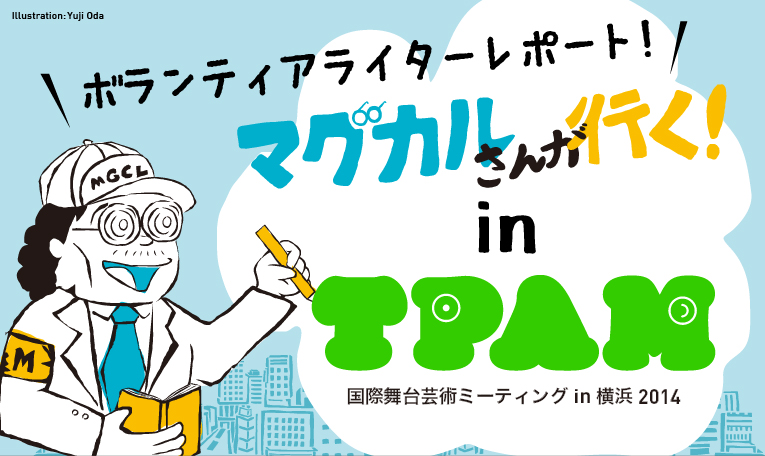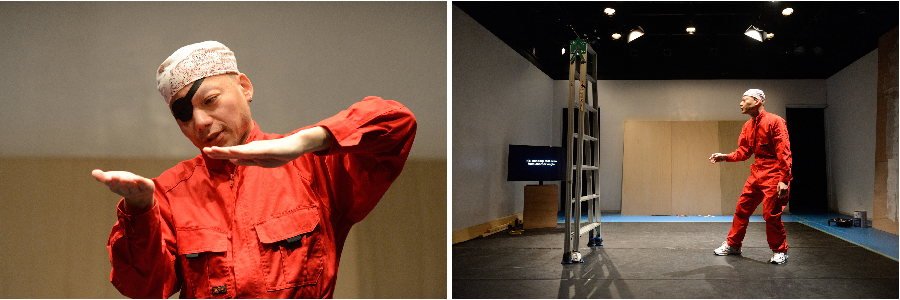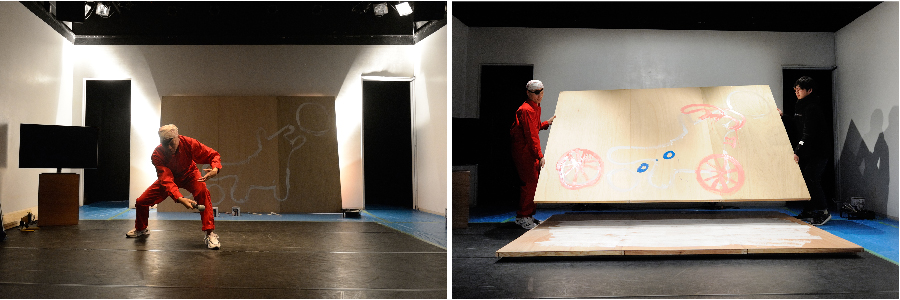Magcal Report in TPAM 2014/TPAM Direction/Katsuhiro Ohira Direction

What is TPAM Direction?
A program in which young creators who are involved in unique activities are selected as directors to create programs with free concepts and new perspectives.
This is an opportunity to share contemporary ideas and issues through each direction, and to consider the possibilities of performing arts together.
*You can view other TPAM reports from this page!
////////////////////////////////////////////////// ////////////////////////////////////////////////// ////////////////////////////////////////////////// //////
Katsuhiro Ohira direction
“Kim Ito x Zan Yamashita”
Yokohama ST spot
2.11(Tue)〜2.13(Thu)
The “Ito Kim x Yamashita Zan” performance was held at Yokohama ST Spot.
Wooden panels and stepladders were placed at the venue, and Kim Ito was the only performer.
When the performance begins, Kim Ito moves slowly and speaks calmly to the audience, as if choosing her words carefully. The nuance of "I'm going" may be closer.
Ito explains his own memories and the problems that are happening in society one after another (regardless of whether it is a true story), such as the Twitter problem, the food fraud incident, the Osprey in Okinawa, etc., but suddenly the stepladder starts talking to Mr. Ito. I'll come.

"What is your profession"
Ms. Ito explained to the stepladder that she was ``doing dance,'' but she was unable to clearly explain what she meant by ``dance'' as a category like ``JAZZ'' or ``HIPHOP,'' so she did not actually dance. I will explain it physically.
Suddenly, a question that cannot be clearly put into words jumps into the flow of explanations that have been continued until then, and what has been explained until then seems to be information without any guarantee, and it becomes ``Everything in this world is in words.'' "It's not something you can do," it seemed like he was telling us through his interaction with the stepladder.
Also, as the play progresses, the words ``that'' and ``this'' gradually become more common in Ito's lines.
What it specifically refers to is just the image of us viewers, and it is up to everyone in the audience to know what "this, this" is referring to visually, such as by drawing on the panel. I think that we can share this, but these are just our imaginations and our own interpretations, and there is no guarantee that they are absolute.
Furthermore, at the end, there is a story about draining the pond in Inokashira Park, and there is a line that says, ``It looks like about 200 things came out.''
I think that "something" was probably the illegally dumped bicycle that was in the news, but Mr. Ito continues to talk about "that" until the end.
``I would like to make the act of throwing something into the pond the final scene of this work.''
Then I asked someone in the audience to nominate someone to throw away ``that'' with me, and to my surprise, I was chosen and ended up throwing ``that'' away with me.
The performance ends with the sound of rushing water as the two throw away a panel with a picture that looks like a bicycle on it.
What on earth was “that”?
Was it really a "bicycle"?
Perhaps I did something even more cruel in my embarrassment.
Now that I think about it, the stepladder that started talking wasn't even called a "stepladder."

“Was that a stepladder?”
When you think about it, ``words'' exist in us as ``images'' even though they have no form, and they have the danger of being transformed into various meanings. And how do we believe too much in what we see in front of us?
I feel like this performance gave me an ``explanation'' that warned me of such dangers.